Partnership

The
Methane to Markets Partnership is an international initiative that
advances cost-effective, near-term methane recovery and use as a
clean energy source. Go to the international Methane to Markets
Partnership Web site. ![]()
Overview
The international Methane to Markets Partnership, launched in November 2004, committed the United States and 13 other countries to advancing cost-effective, near-term methane recovery and use as a clean energy source. The Partnership focuses on methane recovery and use opportunities in the agriculture (animal waste management), coal mine, landfill, and oil and gas system sectors.
Since its launch, the Partnership has added multiple Partner Governments and private and non-government participants who work collaboratively to implement projects around the globe. Public and private sector organizations around the world are now working together with government agencies to facilitate methane reduction projects in agriculture, coal mines, landfills and oil and gas systems. This collaboration is yielding important benefits, including enhanced economic growth and energy security, improved air quality and industrial safety, and reduced greenhouse gas (GHG) emissions.
Participation
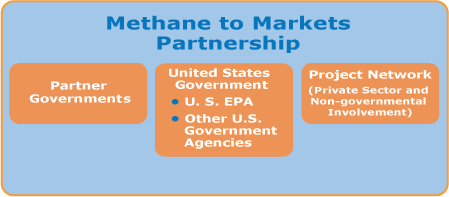
Partner Governments
The Methane to Markets Partnership includes countries ![]() accounting for approximately 60 percent of global methane emissions.
accounting for approximately 60 percent of global methane emissions.
Participating governments have signed a Terms of Reference ![]() (PDF, 18 pp, 390 KB, About PDF) that outlines the purpose, organization, and functions of the Partnership. This document also outlines more specific activities to be undertaken by the Partnership, as such:
(PDF, 18 pp, 390 KB, About PDF) that outlines the purpose, organization, and functions of the Partnership. This document also outlines more specific activities to be undertaken by the Partnership, as such:
- Identify cost-effective opportunities to recover methane emissions for energy production.
- Address barriers to project development (e.g., legal, regulatory, financial, institutional).
- Foster cooperation among Partner countries, the private sector, and other organizations.
Project Network (Private Sector and Non-governmental Involvement)
Active involvement by experts from private-sector entities, financial institutions, and other non-governmental organizations is considered essential to the success of the Partnership. Experts from these organizations have valuable expertise and experience that is vital to fostering development of methane capture and use projects. The Partnership welcomes their involvement through the Project Network.
Interested organizations and individuals can request to join the Project Network![]() by completing the non-binding Project Network Agreement online.
View a current list of Project Network members by sector.
by completing the non-binding Project Network Agreement online.
View a current list of Project Network members by sector. ![]()
U.S. Government Involvement
The U.S. government plays a leading role in the Partnership. Six major agencies and departments across the federal government are providing technical expertise and leadership on the Partnership’s Steering Committee and subcommittees; facilitating communication and outreach activities by serving as the Partnership’s Administrative Support Group (ASG) or secretariat; and working with other Partner Countries, the private sector, and other organizations to develop and support methane recovery and use projects around the world.
The U.S. Environmental Protection Agency (EPA) plays a key role in the Methane to Markets Partnership by building on the success of the Agency’s methane programs. EPA also serves as the Partnership Steering Committee chair and supports the ASG, which performs all of the Partnership administrative tasks (e.g., maintains Web site, sends member e-mails, coordinates meetings).
Other federal agencies also play a central role in the Partnership. These include:
- Department of State: leads international climate change policy and activities.
- Department of Energy: contributes valuable expertise in natural gas and coal mine methane technologies.
- U.S. Trade and Development Agency (U.S. TDA): facilitates development in emerging markets by promoting U.S. partnerships in high priority overseas projects.
- U.S. Agency for International Development (USAID): provides important technical expertise in the economic reform of energy sectors to create markets that support private sector projects in developing countries and those with economies in transition.
- U.S. Department of Agriculture (USDA): lends technical expertise in the animal waste management sector.
For more information, read U.S. Government Leadership in Reducing Methane Emissions (PDF, 4 pp, 446 KB, About PDF).
EPA Methane Partnership Programs
U.S. industries—along with state and local governments—have been working collaboratively with EPA to implement several voluntary programs that promote profitable opportunities for reducing methane emissions. These programs are designed to overcome a wide range of informational, technical, and institutional barriers to reducing U.S. methane emissions, while creating profitable activities for the coal, natural gas, petroleum, landfill, and agricultural industries.
The collective results of EPA’s voluntary methane partnership programs have been substantial. Total U.S. methane emissions in 2005 were more than 11% lower than emissions in 1990, in spite of economic growth over that time period. EPA expects that these programs will maintain emissions below 1990 levels in the future due to expanded industry participation and the continuing commitment of the participating companies to identify and implement cost-effective technologies and practices.
As part of its efforts under the Methane to Markets Partnership, EPA is exporting the expertise and experience gained through these successful voluntary programs to advance methane recovery and utilization around the world. EPA’s efforts both in the U.S. and internationally focus on four industry sectors:
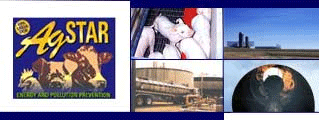 Agriculture
Agriculture
The AgSTAR Program is a voluntary effort jointly sponsored by EPA, the U.S. Department of Agriculture, and the U.S. Department of Energy. The program encourages the use of methane recovery (biogas) technologies at the confined animal feeding operations that manage manure as liquids or slurries. These technologies reduce methane emissions while achieving other environmental benefits. Since the program’s establishment, the number of operational digester systems has grown to more than 125 systems across the United States. This has produced significant environmental and energy benefits, including methane emission reductions in 2007 alone of approximately 80,000 metric tons and energy generation of about 275 million kWh.
Under Methane to Markets, EPA works with various organizations to promote methane recovery and use opportunities worldwide. EPA is working with the World Bank in Southeast Asia to provide technical support to a livestock waste management that integrates policy development and implementation, technological solutions, capacity building, and regional connections. EPA is also working with USAID in Mexico to develop demonstration projects showcasing best practices for the capture and use of methane in large- and small-scale pig farms.
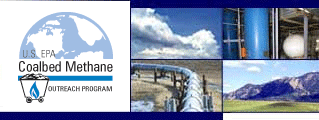 Coal Mining
Coal Mining
The Coalbed Methane Outreach Program (CMOP) is an EPA-sponsored voluntary program whose goal is to reduce methane emissions from coal mining activities. By working cooperatively with coal companies and related industries, CMOP helps to identify and implement methods to use CMM instead of emitting it to the atmosphere. In turn, these actions mitigate climate change, improve mine safety and productivity, and generate revenues and cost savings. Since CMOP began, the U.S. coal industry has captured and used more than 300 billion cubic feet (Bcf) of CMM. Additionally, by working to maximize the amount of gas recovered from their drainage systems, these projects greatly reduced mine ventilation costs and improved safety conditions for miners.
Under Methane to Markets, EPA works with organizations in many coal-producing countries to promote CMM development and use. EPA is currently working with the Asian Development Bank on the Jincheng project in Shanxi, China—the world’s largest CMM-fueled power plant. Over the 20-year lifetime of this project, it is estimated that 40 million metric tons of carbon equivalent (MMTCO2E) could be avoided. EPA also characterized global CMM emissions, projects, potential, and obstacles in a comprehensive report, the Coal Mine Methane Global Overview, ![]() developed in 2006 on behalf of the Methane to Markets Partnership Coal Technical Subcommittee.
developed in 2006 on behalf of the Methane to Markets Partnership Coal Technical Subcommittee.
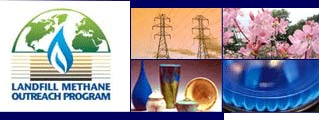 Landfill
Landfill
The Landfill Methane Outreach Program (LMOP) is a voluntary assistance and partnership program that promotes the use of landfill gas (LFG) as a renewable, green energy source. Landfill gas is the natural by-product of the decomposition of solid waste in landfills and is comprised primarily of carbon dioxide and methane. By preventing methane emissions through the development of landfill gas energy projects, LMOP helps businesses, states, energy providers, and communities protect the environment and build a sustainable future. LMOP has assisted in the development of approximately 330 LFG utilization projects, which have prevented the release of more than 24 MMTCO2E to the atmosphere over the past 12 years.
Under Methane to Markets, EPA is working with countries and project network members to promote LFG recovery and use by offering a broad spectrum of outreach, education, and technical assistance services. EPA has assessed the technical and economic feasibility of LFG project development at selected landfills in a number of countries around the world.
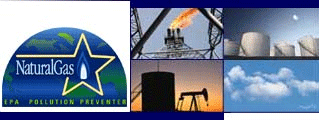 Oil and Gas Systems
Oil and Gas Systems
The Natural Gas STAR Program is a flexible, voluntary partnership between EPA and the oil and natural gas industry. Through the Program, EPA works with companies that produce, process, and transmit and distribute natural gas to identify and promote the implementation of cost-effective technologies and practices to reduce methane emissions. Natural Gas STAR industry partners have operations in all of the major industry sectors (production, processing, transmission, and distribution) and represent more than 50% of the natural gas industry in the United States. Since its inception, Natural Gas STAR partners have eliminated nearly 471 billion cubic feet (Bcf) of methane emissions through the implementation of more than 80 cost-effective technologies and practices.
In September 2006, EPA officially launched Natural Gas STAR International. Natural Gas STAR International, administered under the Methane to Markets Partnership, builds on the domestic Gas STAR Program to promote voluntary, cost-effective methane emission reduction activities in the international oil and gas sector. Gas STAR and USAID are currently working with Mexico’s state-owned oil company PEMEX to identify and implement more than seven large-scale methane emission reduction projects, building on previously successful pilot projects.
![[logo] US EPA](https://webarchive.library.unt.edu/eot2008/20081018121948im_/http://www.epa.gov/epafiles/images/logo_epaseal.gif)





